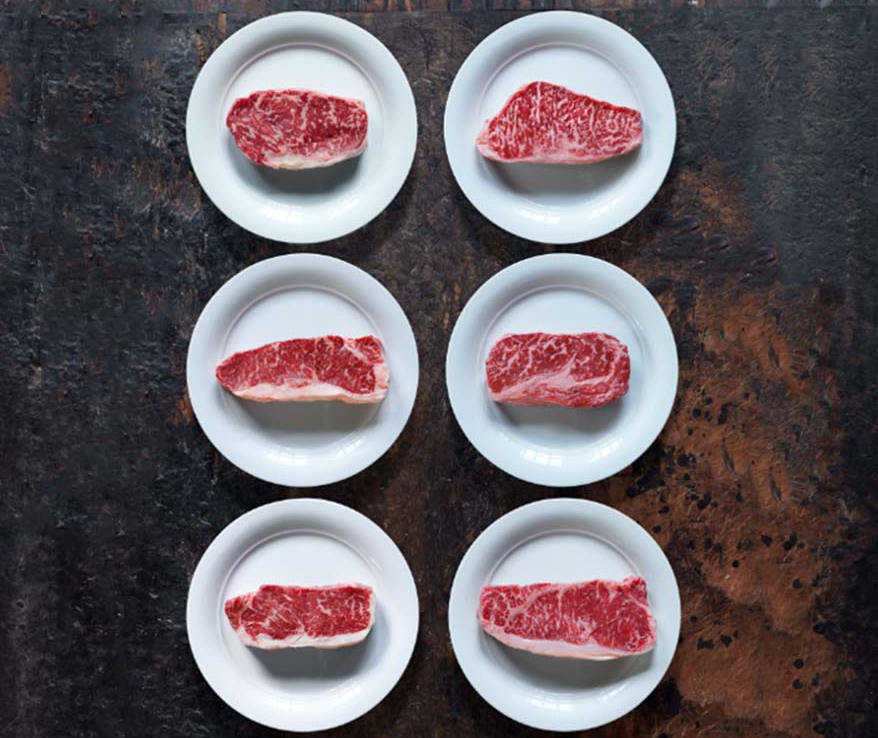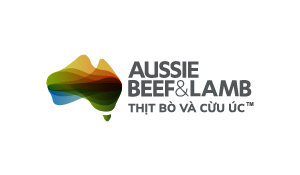Beef
Australian beef is renowned around the world for its outstanding quality, clean and green production, superior traceability and quality assurance systems.
BEEF CUTS
With more than 70 potential cuts to utilise, the beef carcase is the most versatile and complex of the proteins. With a range of textures, tenderness, flavour profiles and eating quality characteristics, Australian beef is the superior choice.
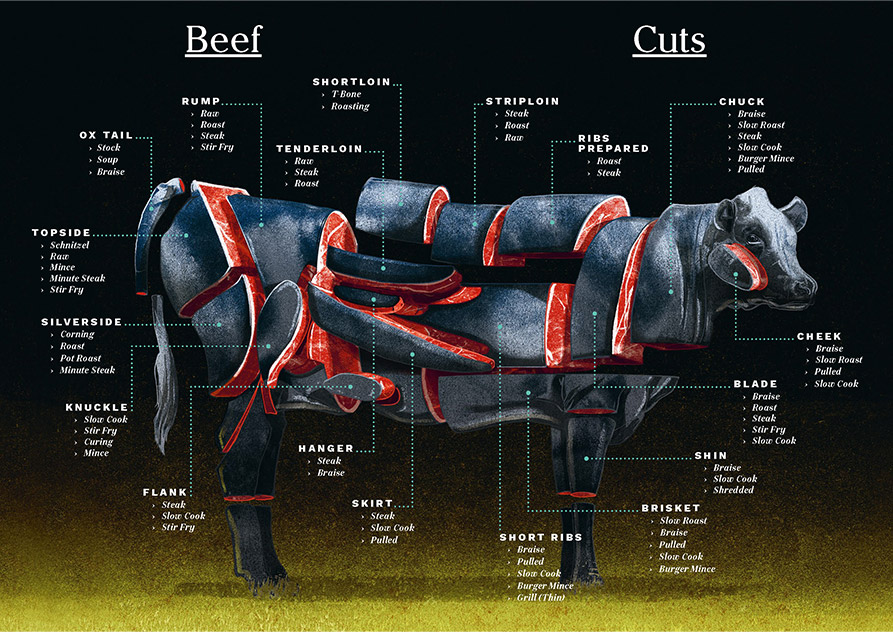
GRASS FED
Grass fed beef tends to vary in flavour, texture and tenderness due to Australia's considerable differences in cattle breeds, pasture quality and type, soil type, topography and climatic conditions.
Generally, grass fed beef is said to have a robust, earthy flavour and excellent texture. The fat colour of grass fed beef varies but tends to be more yellow or creamy in appearance when compared to grain fed beef - this is due to the intake of carotene, a pigment found in plants. Also, genetically some breeds are more susceptible to yellow fat. Depending on a number of factors including breed and feed quality, marbling in grass fed beef also varies.
Around 97% of Australia’s 28 million cattle are located on pasture based properties and stations.
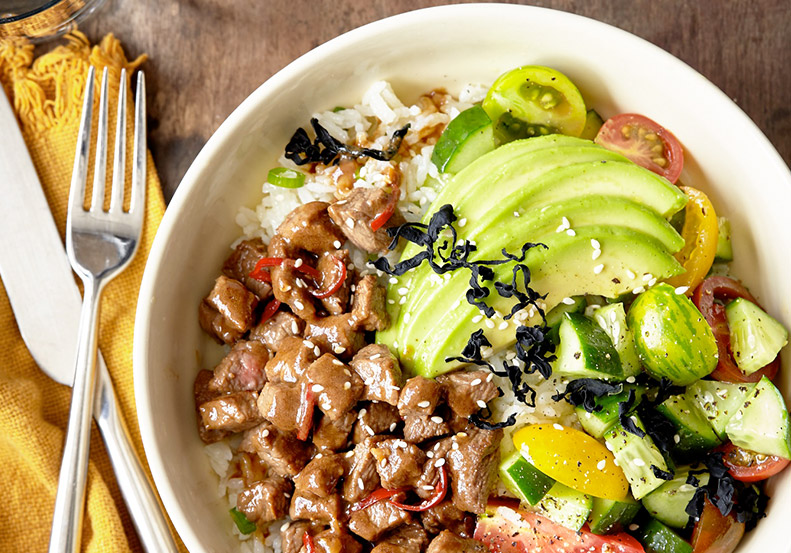
GRAIN FED
Grain fed beef tends to be a leaner product with whiter fat but is generally higher in intramuscular fat (marbling) than grass fed beef due to the high energy rations that grain fed cattle eat. Grain fed beef has a smooth texture and delivers a consistent eating quality.
Like grass fed beef, there are many variances in product depending on time on feed, breed, climate, feedlot size and market requirements.
Grain fed cattle spend 85-90% of their lives on pasture; the average time cattle spend in Australian feedlots is 95 days.
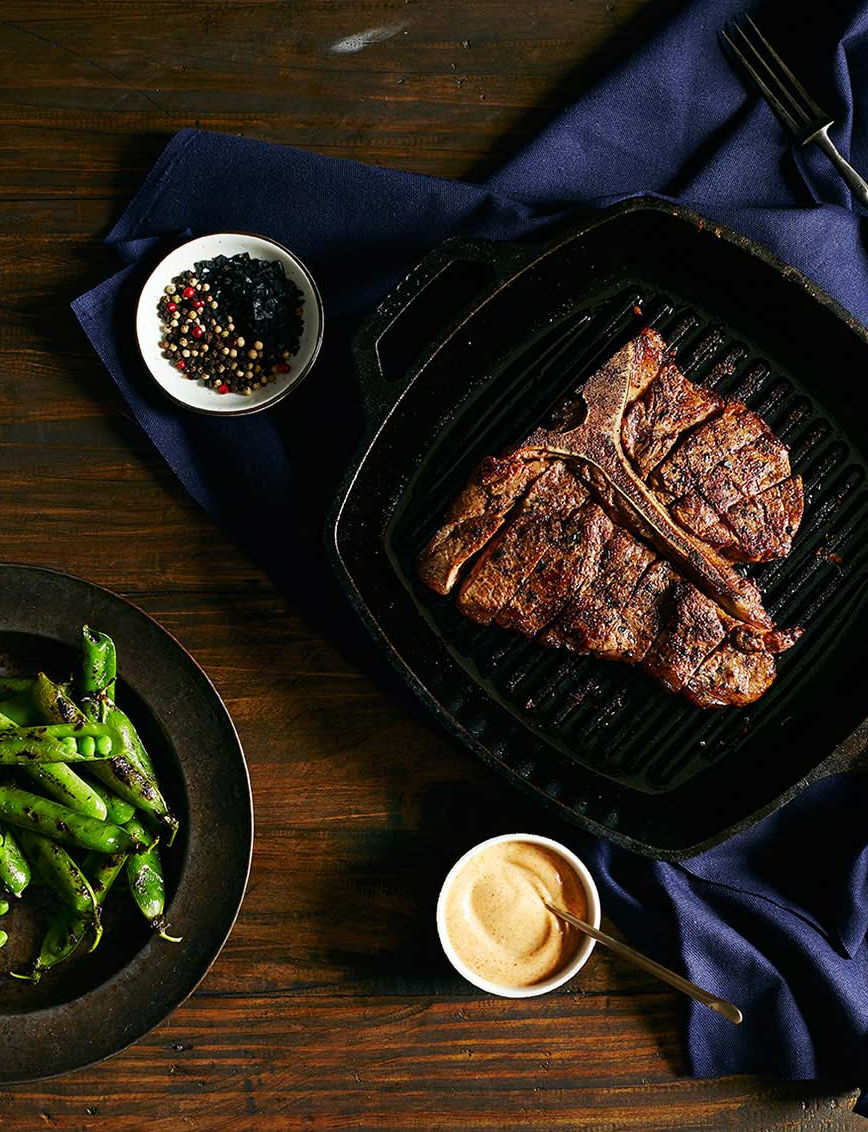
MARBLING
Marbling is the last fat to be deposited in the body and so it is the first fat to be used by the animal as an energy store.
Therefore to maximise marbling within red meat, cattle must be on a highly nutritious, high energy diet - whether that be grass or grain. Different types of farming methods produce different results.
Marbling can also be affected by genetics and some breeds such as Wagyu are renowned for their extensive marble characteristics.
Marbling does have a positive effect on eating quality, and it is this marbling that contributes to the juiciness and flavour of meat.
Marbling score is a component of the AUS-MEAT beef quality grading system, and refers to visible fat found between muscle fibre bundles and is assessed within the ribeye muscle.
Marbling score is assessed visually by an AUS-MEAT qualified grader during the process of carcase grading using the scoring range 0 to 9. In addition to the quantity, the distribution and texture of visible fat flecks within the ribeye are considered during assessment of marbling score.
